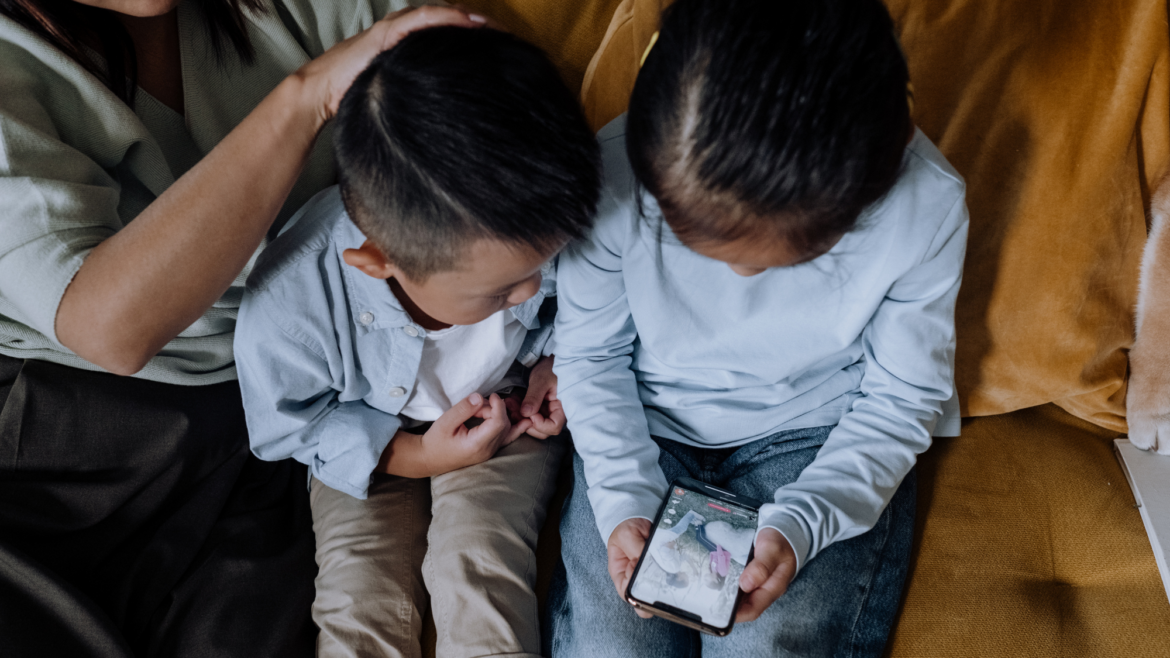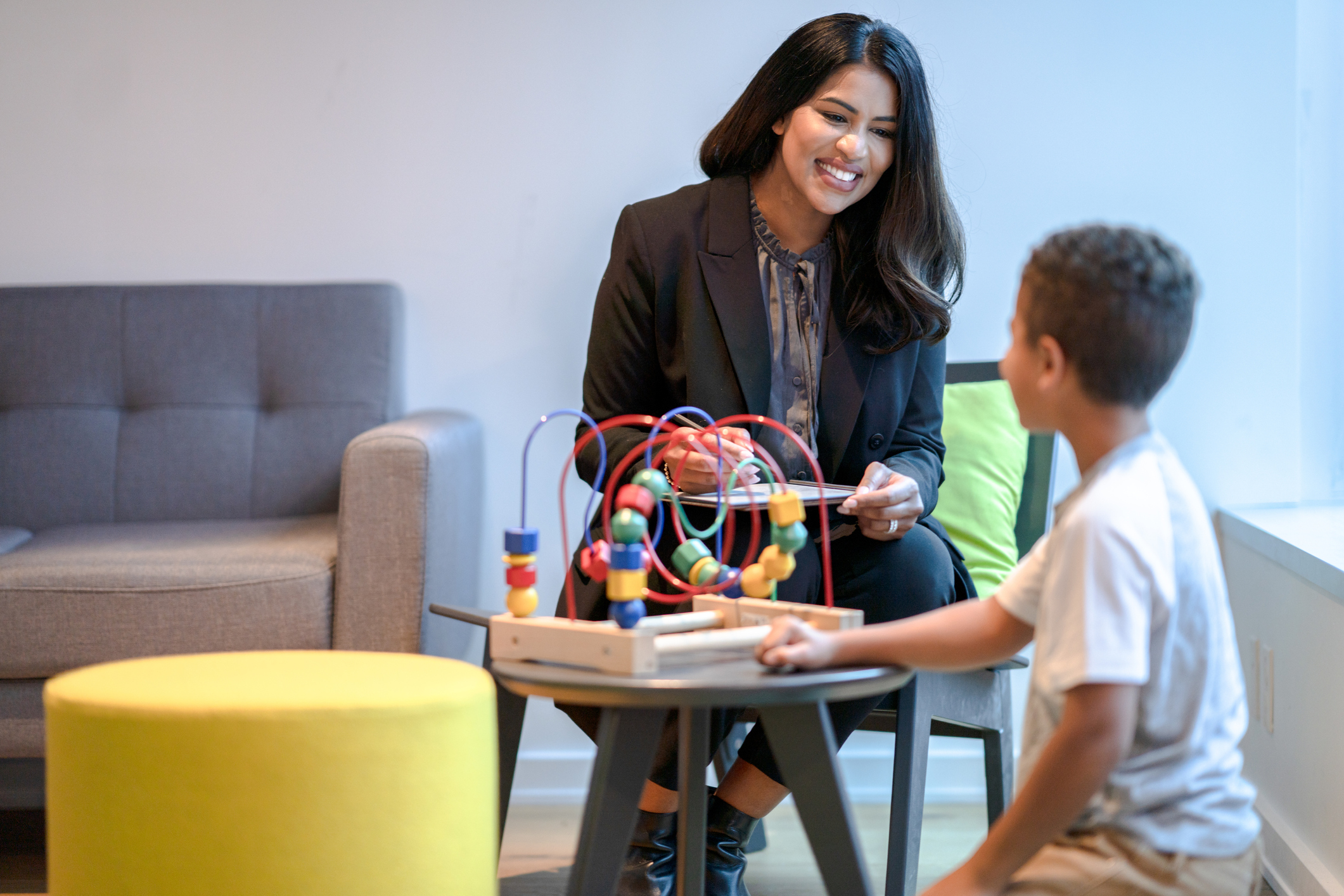Screens are everywhere: sports, theater, and concert venues; billboards; computers, phones and tablets for personal, educational, and vocational use; television and gaming devices, etc. They are larger than life, captivating, and amazing. They are also portable, facilitating use, while also inviting privacy and secrecy. We are drawn to screens and depend on them, but at what cost? How much time should they be spending on screens? At what age should I allow access? These are just a few of the questions I’m wrestling with as a parent.
Health behaviors are actions related to sleep, nutrition, physical activity, and social engagement that we can take to promote, maintain, or regain our physical and mental well-being. Activities done in front of a screen (i.e., screen use), such as texting, social media, video gaming, and watching movies or shows can affect these health behaviors and our well-being. Therefore, I set out to find out how much time we spend on screens and how they affect us.
How Much Time Do We Spend on Screens?
We are engaging in hours of non-school related screen use per day. Screen use across the globe increased with social distancing during the COVID-19 pandemic and appears to have remained higher once precautions were lifted. As you can see, screen use increases with age.
| Age | Screen Use Per Day* | Most common screen use |
| 2-5 year-old | 4.5 hours | Not Available |
| 8-10 year-old | 4-6 hours | Television (4 hours) |
| 11-14 year-old | 6-9 hours | Television (5 hours) |
| 15-18 year-old | 7.5 hours | Television (4.5 hours) |
| Adults | 11 hours | Television (4.75 hours) |
*Does not include screen use for school-related activities
Are Screens Changing Our Brains?
The brain undergoes rapid changes in utero and during childhood. The first eight years of life are critical to brain growth and development, building a foundation for learning and mental and physical health. By early adolescence, the brain is finished growing, but is not fully developed and matured until the mid to late 20s. Yes, caregivers of young adults, this explains why your children continue to make questionable choices beyond the teen years.
Screen use has been associated with changes in the brains of both preschool and adolescent youth. Imaging has showed several changes in brain structure. With greater screen use, brain development was accelerated in areas responsible for visual processing, suggesting that screen use can enhance brain function. However, more screen use was also associated with underdevelopment in other brain areas that are involved in more complex skills.
In a longitudinal study of over 7,000 toddler and preschool youth in Japan, more screen time at 1 year of age was associated with caregiver report of developmental delays in communication and problem solving at ages 2 and 4. Another study of 5,000 high school youth in Canada reported that increased screen use was associated with greater attention problems, and hyperactive and impulsive behaviors.
How Much Is Too Much?
Alternatively, is there an optimal amount of time we should allow our kids to engage with screens? These are difficult questions to answer as studies have reported mixed findings. In previous policy statements, the American Academy of Pediatrics (AAP) recommended less than two hours of screen time for ages 5 and up. Currently, the AAP has moved away from recommending a specific hour limit given the realities that most kids spend more than two hours a day on screens and kids and families are different. Also, evidence suggests that not all screen time is equal. However, the AAP does caution against certain types of screen use in young children (e.g., prolonged television or YouTube viewing for infants; open access to tablet or phone for toddlers) and encourages you to create a plan based on what makes sense given your family’s situation.
What Does All of This Mean?
To help make sense of the above-mentioned findings, I want to highlight a few points this research on screen use and brain changes.
- Studies often use self-report of screen use, which may not always be accurate.
- Some studies “double count” screen use (e.g., 1 hour of texting while simultaneously gaming = 2 hours of media use), which could inflate the average number of hours.
- Not all screen use is the same. In some cases, we use screens to create, communicate, and socialize. Outside of vocational responsibilities, adults may also use screens to manage their banking, purchase necessary items for the family, and organize busy lives, among many other things. We will discuss more about this in part two of this topic.
- Many of the studies are correlational, which means they don’t address cause and effect. They merely show that two things are related.
In summary, a typical youth engages in hours of non-school related screen use per day. Screen use is associated with changes in our brains, and there are important things to consider, such as:
5 C’s of Media
Healthychildren.org provides a great resource on how to use the 5 C’s of media. Below is a summary of the questions to consider.
Child: What is your child’s personality? How are they affected by screens?
Content: What do your kids watch and do on screens?
Calm: What are your child’s coping strategies? Do they rely on screens to calm down?
Crowding Out: Is use of screens crowding out other things your family cares about?
Communication: Do you talk with your kids about what they are seeing and doing on screens?
Tips for Using and Managing Screen Time
- If you have very young children, consider at what ages you plan to introduce media (e.g., types of screens, content, apps). It’s helpful to be prepared instead of “put on the spot” when your child requests additional access.
- Be very clear about the scope and details of your family’s screen use plan – what is expected, what is not allowed, privacy, etc.
- Consider setting screen time limits. This might include a daily time limit on overall screen use or on certain types of screen use.
- If you plan to reduce screen time, be realistic. Start by cutting time down in increments (e.g., 25%) or reducing during certain times (e.g., school night). Note that kids often misbehave when new limits are put on them, so be prepared to consider how you will handle this misbehavior.
- Look into setting limits on what your child can access on personal devices and consider what you are comfortable with in terms of their exposure to sensitive material (devices have parental control settings). This may differ for children at various stages of development.
- Discuss “screen-free zones,” such as bedrooms, bathrooms, etc. Encouraging public use of screens is easier to monitor and can deter youth from exposure to explicit material or engaging in prohibited use of screens, however this is defined by the family.
- Encourage youth to put down personal screens during times when the family is socializing together, such as meals, recreational activities, or family movie night.
- Natural transition times, such as holidays and summer breaks, are good times to set expectations about screen use. Consider adapting the typical schedule for that temporary time period. Be clear about revised expectations and when it’s time to transition back to the “regular schedule.”
- Discuss with your child the benefit of screens as tool to get information and explain the importance of recognizing the source of the information (e.g., vetted source versus opinion). Also, talk about the importance of putting information into your own words versus the risk of plagiarism when using screens for educational purposes.
- Caregivers are encouraged to model healthy screen use habits for their children and teens. Youth learn behaviors from watching caregivers. It can be more difficult for caregivers to enforce a family rule on screen use when they don’t follow it, sending a mixed message to the youth.
Check out Part 2 of this series, Balancing Risks and Benefits of Screen Time.
For more helpful practices and tips on Health Behaviors and other practices, check out PracticeWise’s Practitioner Guides available for purchase.
—
About the Author
Janelle Wagner Ph.D., serves on the Professional Development Team as an Associate Trainer and Consultant for PracticeWise. Learn more about Dr. Wagner on the PracticeWise team page.







